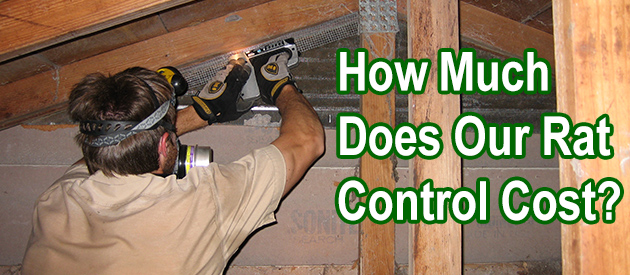Riverside County, Riverside Rat Control Situation:
David, Read your entire website with interest as we recently purchased a home in the Palm Springs area and the inspection of it passed but did not mention any rats/mice. However within the first week of moving in we heard the distinct scratching of feet in our attic. I have since been up there and we do have droppings and signs that they have been there for a while. Our plan is to seal the entry points, lay traps and then have the attic insulation removed, attic sanitized and new insulation put in. See questions below if you would be so kind as to assist. To this point, we have no droppings in the living area, no outside obvious entry points (we walked the premises with a professional extermination company that handles rodents) and now moving to the roof to get a roofing company to come in and close all entry points, seal caps etc. Garbage is in the garage in sealed containers, we have no trees close to the house and no citrus at all on the property. Reason for this email is that the only company you show in this area is in Riverside and I wonder if you have any recommendations for a firm in the Coachella Valley. If so, could you please send me the contact name and phone number as we will be following your recommendations to the letter. QUESTIONS: Assuming we get all the entry points closed and sealed properly, should we use the extermination company as you show to do the re-insulation of the attic? We have been quoted on the service that they will trap and remove, then using HEPA vacuums and in proper gear will remove all insulation in bags for safe destruction and then they use a bleach/water combination to sanitize. Obvious next step is to re-insulate the attic. Your thoughts on the process and the bleach/water solution? Recognizing that we have no contacts within this industry, what questions should we be asking the firms we are talking to so as to avoid getting ripped off or worse...not eliminating the issues and problems? Last question: roof is most likely the entry points. Am I going down the right path to get a roofing company to seal these points from the outside and ask that they use steel within the closure? Really appreciate the reply as Canadians that just bought the home, we don't have quite the issue back where we are from. Thanks, Tim
Riverside Rat Control Tip of The Week
Is Trapping Rats Legal?
When it comes to trapping rats, there has been a misconception for quite some time as many house owners think it is illegal. This is nothing but a myth, so if you are planning to get a trap to remove the rats in your home, you are legally allowed to do so.
Rats are one of the most destructive household pests. Being carriers of diseases and different types of disease-causing organisms, they contaminate the surface of your home and any of your food substances that they come in contact with. Also, these pests bring in highly inflammable materials into your home and rip off electrical cables that are capable of igniting a fire. All these clearly show how dangerous they are to you and your property and why you need to get rid of them as early as you can.
Apart from the need to get rid of this major household pest, the use of traps is the fastest and the best way to get rid of rats. Although, the use of glue traps has been labeled by PETA and The Humane Society as an inhumane way of trapping rats. With the exception of the inhumane aspect of glue traps, the use of traps is completely legal.
So if you are thinking of removing the rats in your home, you can go ahead and use a trap.


